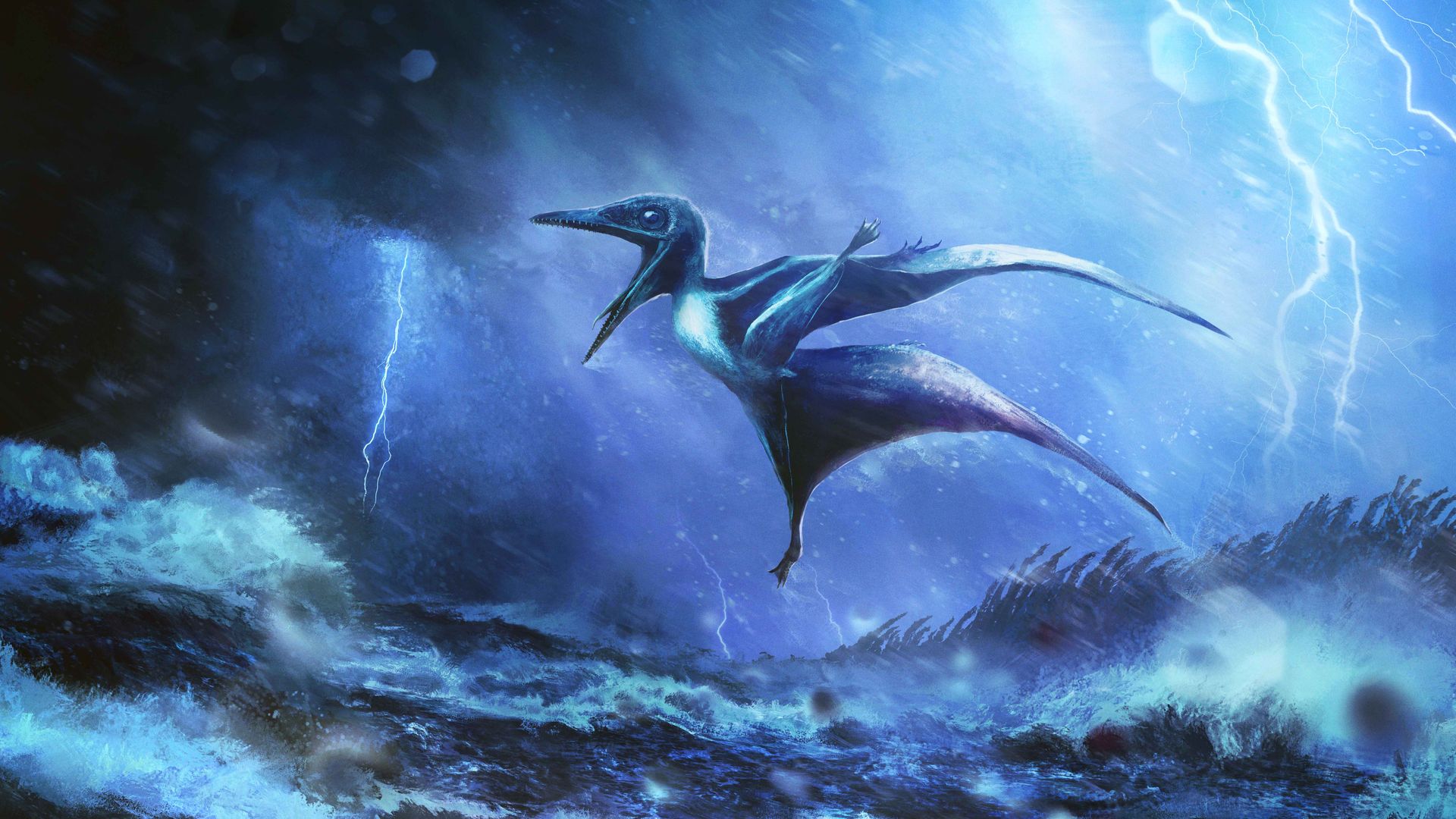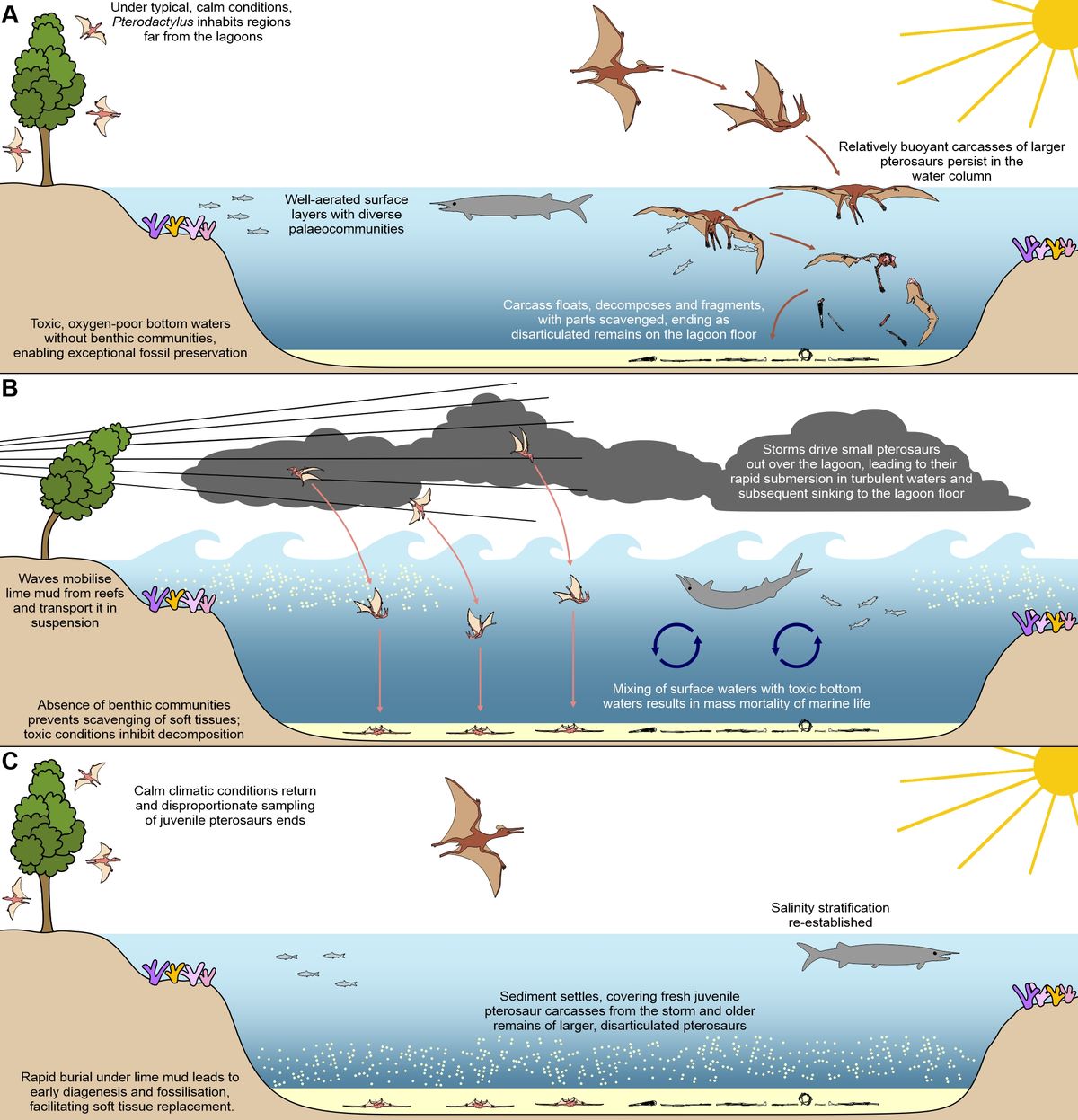🦖 Two pterodactyls killed by hurricane in Germany (explanation)
Follow us on Google News (click on ☆)
Researchers performed a necropsy, meaning an animal autopsy, on these juvenile pterosaur skeletons from Germany. Their analyses indicate that violent winds threw these creatures into a lagoon, where they drowned under tumultuous waves. Pterosaurs, often colloquially called "pterodactyls," dominated the skies during the age of dinosaurs. The studied specimens belong to the species Pterodactylus antiquus, the first ever discovered, which popularized their nickname.

Fossils of two baby Pterodactylus killed during a violent storm.
Credit: Artwork by Rudolf Hima
These newborns are among the smallest specimens of P. antiquus ever found, with a wingspan of about 20 centimeters (8 inches), comparable to that of a small bat. The study, published in Current Biology, suggests they were part of many young pterosaurs killed during mass mortality events linked to severe storms in the region, such as hurricanes. Adults, with a wingspan of about 1.1 meters (3.6 feet), likely had better ability to withstand the winds that doomed the younger ones.
Nicknamed "Lucky" and "Lucky II," these fossils owe their exceptional preservation to their rapid burial in the lagoon sediments. Pterosaur skeletons, light and fragile with hollow, thin-walled bones, are rarely fossilized intact. The Solnhofen limestone formation in Bavaria, dating back about 150 million years, was once a semi-tropical marine landscape with coral reefs and islands, offering ideal conditions for fossilization.
The research team, led by Rab Smyth from the University of Leicester, used a fluorescent UV lamp to examine fractures on Lucky II's wings, indicating excessive force from wind before death. These injuries are similar to those observed in birds and bats during modern storms. Scientists estimate that powerful gusts tore the young pterosaurs from their island habitats and swept them into the lagoon, where currents quickly buried them.

Diagram illustrating how storms led to the remarkable preservation of young pterosaur fossils.
Credit: University of Leicester
This study challenges the long-held idea that Solnhofen's lagoon ecosystems were dominated by small pterosaurs. In reality, the prevalence of juveniles in the fossils results from preservation biases: catastrophic storms disproportionately affected young and inexperienced individuals, while more robust adults survived better.
Mass mortality events
Mass mortality events occur when a large number of individuals of a species die simultaneously, often due to natural disasters like storms, volcanic eruptions, or abrupt climate changes. In the case of Jurassic pterosaurs, tropical storms were likely a key factor.
These phenomena can bias the fossil record by overrepresenting certain age groups or species. For example, young animals, less resilient, are more likely to perish during such events, which explains the predominance of juvenile fossils in sites like Solnhofen.
Studying these events helps paleontologists understand ancient population dynamics and environmental pressures. By comparing with modern occurrences, such as bird mortalities during hurricanes, researchers can infer past conditions.